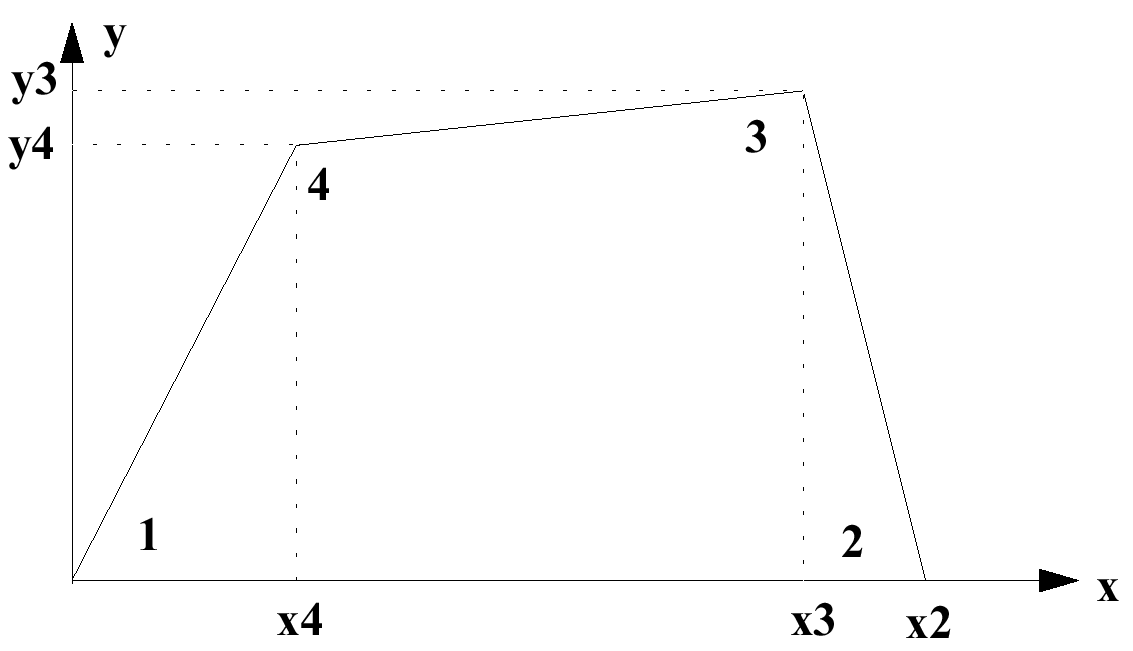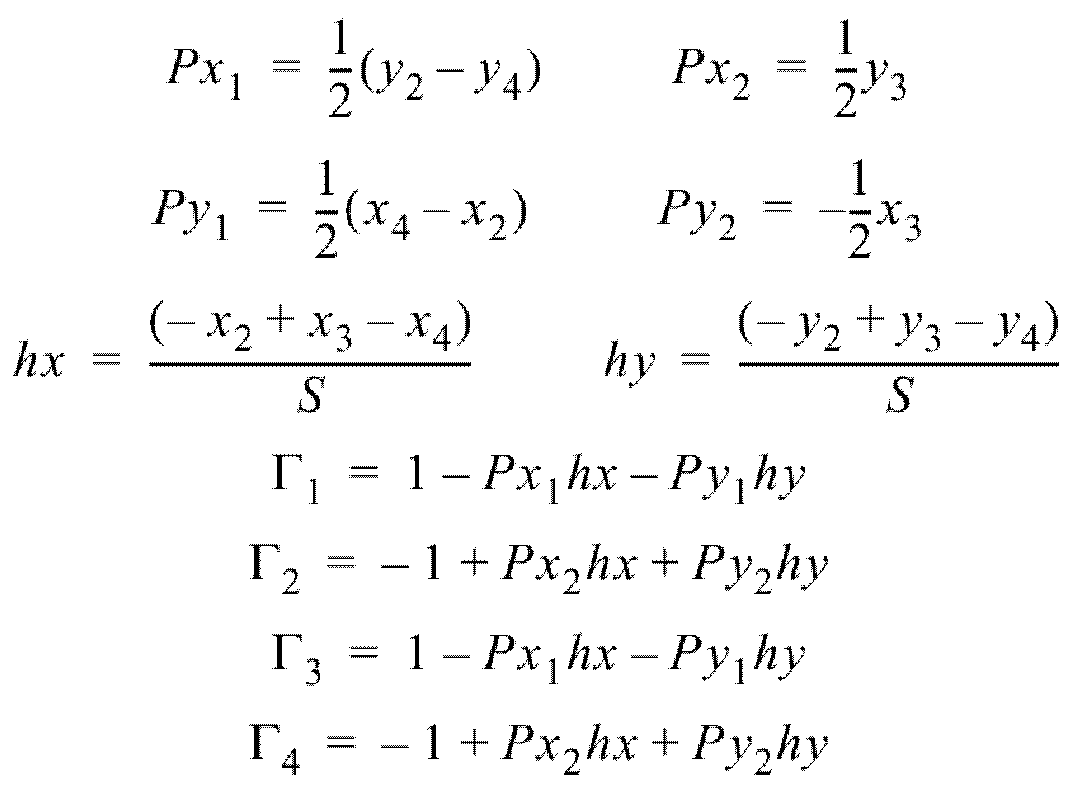Hourglass Resistance
To correct this phenomenon, it is necessary to introduce anti-hourglass forces and moments. Two possible formulations are presented hereafter.
Flanagan-Belytschko Formulation
Ishell=11
In the Kosloff-Frasier formulation seen in Kosloff and Frasier Formulation, the hourglass base vector is not perfectly orthogonal to the rigid body and deformation modes that are taken into account by the one point integration scheme. The mean stress/strain formulation of a one point integration scheme only considers a fully linear velocity field, so that the physical element modes generally contribute to the hourglass energy. To avoid this, the idea in the Flanagan-Belytschko formulation is to build an hourglass velocity field which always remains orthogonal to the physical element modes. This can be written as:
The linear portion of the velocity field can be expanded to give:
Decomposition on the hourglass base vectors gives 1:
- Hourglass modal velocities
- Hourglass vectors, base
Remembering that and factorizing Hourglass Modes, Equation 5 gives:


Elastoplastic Hourglass Forces
Ishell=3
The same formulation as elastic hourglass forces is used (Hourglass Elastic Stiffness Forces and Flanagan et al. 1) but the forces are bounded with a maximum force depending on the current element mean yield stress. The hourglass forces are defined as:
For in plane mode:
For out of plane mode:
- Element thickness
- Yield stress
- Element area
Physical Hourglass Forces
Ishell=22, 24
The hourglass forces are given by:
For in-plane membrane rate-of-deformation, with and defined in Bilinear Shape Functions, Equation 3:
For bending:
It is shown in 2 that the non-constant part of the membrane strain rate does not vanish when a warped element undergoes a rigid body rotation. Thus, a modified matrix [ ] is chosen using as a measure of the warping:
This matrix is different from the Belytschko-Leviathan 3 correction term added at rotational positions, which couples translations to curvatures as:
This will lead to membrane locking (the membrane strain will not vanish under a constant bending loading). According to the general formulation, the coupling is presented in terms of bending and not in terms of membrane, yet the normal translation components in ( ) do not vanish for a warped element due to the tangent vectors which differ from .
Fully Integrated Formulation
Ishell=12
The element is based on the Q4 24 shell element developed in 4 by Batoz and Dhatt. The element has 4 nodes with 5 local degrees-of-freedom per node. Its formulation is based on the Cartesian shell approach where the middle surface is curved. The shell surface is fully integrated with four Gauss points. Due to an in-plane reduced integration for shear, the element shear locking problems are avoided. The element without hourglass deformations is based on Mindlin-Reissner plate theory where the transversal shear deformation is taken into account in the expression of the internal energy. Consult the reference for more details.
Shell Membrane Damping
The shell membrane damping, dm, is only used for LAWS 25, 27, 19, 32 and 36. The Shell membrane damping factor is a factor on the numerical VISCOSITY and not a physical viscosity. Its effect is shown in the formula of the calculation of forces in a shell element:
read in D00 input (Shell membrane damping factor parameter) then:
Effect in the force vector ( ) calculation:
- Density
- Area of the shell element surface
- dt
- Time step
- Sound speed
In order to calibrate the dm value so that it represents the physical viscosity, one should obtain the same size for all shell elements (Cf. factor), then scale the physical viscosity value to the element size.
A Uniform Strain Hexahedron and Quadrilateral with Orthogonal Hourglass Control, Int. Journal Num. Methods in Engineering, 17 679-706, 1981.
Explicit algorithms for the nonlinear dynamics of shells, Computer Methods in Applied Mechanics and Engineering, 42:225-251, 1984.
Physical stabilization of the 4-node shell element with one-point quadrature, Computer Methods in Applied Mechanics and Engineering, 113:321-350, 1992.
Modeling of Structures by finite element, volume 3, Hermes, 1992.